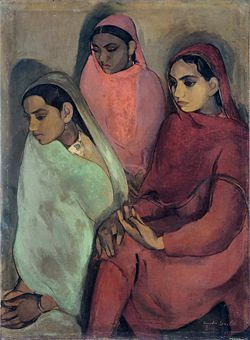(By Nalini S Malaviya)
Art is often bought as a décor element or as a status symbol, and as individual preferences evolve with time, many people like to change their artwork to reflect their current state of mind. Art itself is a very personal experience and no two people will respond to it in the same way. What appeals to one might be completely disliked by another. Some people are drawn to pleasant themes such as landscapes and abstracts, while there are some who prefer figurative art and there are yet others who go only by the artist’s name. The artist’s name has become synonymous to a brand. The bigger the artist the more expensive the product, the greater the brand and hence higher the status symbol.
When most people begin collecting art, they prefer to have smaller budgets and usually invest in young and upcoming artists or works by students. As time progresses, their sensibilities evolve and they tend to invest in a wider range of art and in more contemporary works. With stable financial conditions buyers are more likely to invest in known artists.
In this entire cycle the biggest drawback is that as people collect more art they run out of wall space to display them. The challenge then lies in wondering what to do with works collected earlier. Bartering art is a novel concept and one which has been initiated by a few people but is yet to find widespread acceptance. This could be one way to trade in old art with fresh pieces. Another option that could work well would be where galleries could take back the earlier works and offer newer pieces. The difference in price could be adjusted accordingly. Systems such as these will help the market to grow and expand the buyer base further. It will also instill confidence in buyers and investors. At this point in time the one thing that the art market surely needs is to gain the trust and confidence from its investors.
(Published in Financial Times)




